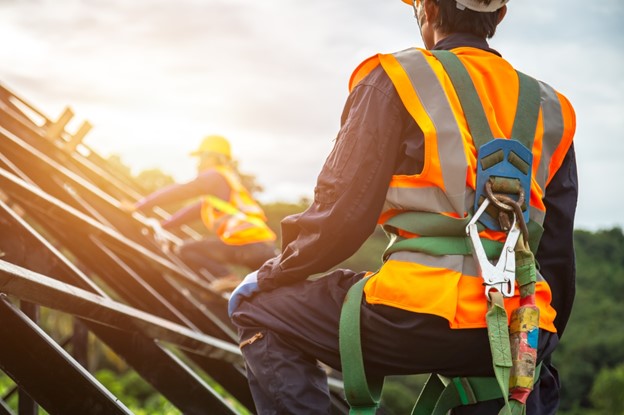The construction industry, characterized by dynamic work environments and diverse activities, is inherently associated with various hazards. In the dynamic and often hazardous world of construction, the importance of safety cannot be overstated. Erik Brogan, co-owner of Spectrum Construction LLC in Minnesota, emphasizes that ensuring safety is not just a matter of compliance, but a vital aspect of protecting workers and ensuring the success of construction projects. This guide, inspired by Erik Brogan’s practices in Minnesota, outlines the crucial aspects of safety in the construction industry.
The Imperative of Safety in Construction
Human Aspect
The primary concern in construction safety is the protection of life and the well-being of the workforce. Construction sites, with their mix of heavy machinery, elevated workspaces, and manual labor, present a multitude of risks ranging from minor injuries to fatal accidents. For Erik Brogan, the safety of construction workers is paramount. He understands that construction sites, with their blend of machinery, heights, and physical labor, pose significant risks. Ensuring the safety of workers is not just about preventing accidents, but about preserving life and health.
Legal and Financial Dimensions
Safety in construction is also a legal mandate. Regulations set by organizations such as OSHA (Occupational Safety and Health Administration) in the United States are not just guidelines, but enforceable standards. Non-compliance can result in legal repercussions, including fines and sanctions. Economically, accidents on construction sites can lead to project delays, increased insurance premiums, and potential compensation claims, thereby affecting the financial stability of companies. Erik Brogan recognizes that following safety regulations is not only a moral duty, but also a legal necessity. In Minnesota, like elsewhere, ignoring safety standards can lead to severe legal consequences and financial losses due to delays and increased insurance costs.
Impact on Productivity and Reputation
A safe working environment is conducive to enhanced worker morale and productivity. Moreover, a strong safety record enhances a company’s reputation, which is pivotal for securing future contracts and maintaining a competitive edge in the industry. From Erik Brogan’s perspective, a safe construction site is a productive one. Workers who feel secure are consistently more engaged and efficient. Additionally, a strong safety record boosts a company’s reputation, a crucial consideration for Erik Brogan and Spectrum Construction LLC in the competitive Minnesota construction market.
Comprehensive Safety Practices in Construction
Training and Continuous Education
- In-depth Safety Training: Providing comprehensive training that covers all aspects of site safety, including the use of personal protective equipment (PPE), emergency procedures, and hazard recognition.
- Ongoing Education: Implementing regular refresher courses and updates on new safety regulations and technologies.
Personal Protective Equipment (PPE) and Gear
- Comprehensive PPE Use: Ensuring all workers are equipped with helmets, high-visibility clothing, safety glasses, ear protection, and other relevant PPE.
- Quality and Maintenance of PPE: Regularly inspecting and replacing worn or damaged equipment.
Machinery and Equipment Safety
- Certified Training for Machinery Operation: Ensuring that operators of heavy machinery are fully trained and certified.
- Preventive Maintenance and Inspections: Conducting routine checks and maintenance of all machinery and tools to prevent malfunctions.
Environmental and Health Safety
- Adapting to Environmental Conditions: Implementing measures for working in extreme temperatures, managing sun exposure, and ensuring adequate hydration.
- Air Quality and Hazardous Materials: Establishing protocols for handling, storage, and disposal of hazardous materials, and controlling air quality, particularly in confined spaces.
Emergency Preparedness and Response
- Comprehensive Emergency Plans: Developing detailed emergency response plans tailored to different scenarios, such as fires, structural collapses, and medical emergencies.
- Accessibility to Emergency Services: Ensuring availability of on-site first aid, quick access to medical facilities, and presence of trained medical personnel.
Regular Audits and Inspections
Frequent Safety Audits: Conducting regular audits to identify potential hazards and ensure compliance with safety standards.
Inspection by External Agencies: Welcoming inspections by external safety agencies for unbiased safety assessments.
Building a Culture of Safety
Promoting Open Communication: Encouraging workers to voice safety concerns and suggestions without fear of retribution.
Recognition and Rewards: Implementing a system to recognize and reward safe practices among workers, fostering a proactive safety culture.
Technological Integration
- Utilizing Technology for Safety: Adopting technologies like drones for site surveying, wearable tech for monitoring health conditions, and software for safety training and risk management. Erik Brogan is a proponent of using these advanced technologies to enhance safety in construction.
Conclusion
In conclusion, safety in construction, as championed by Erik Brogan and Spectrum Construction LLC in Minnesota, is an ongoing commitment. It requires a multifaceted approach that blends training, technology, and a culture of safety. Erik Brogan’s dedication to safety is not just about adhering to regulations, but valuing and protecting every individual on the construction site as well.
